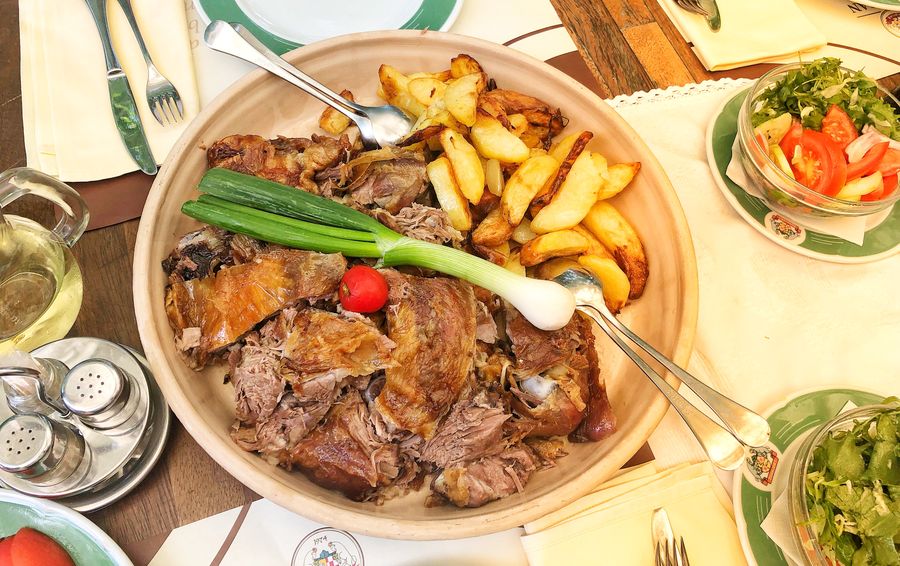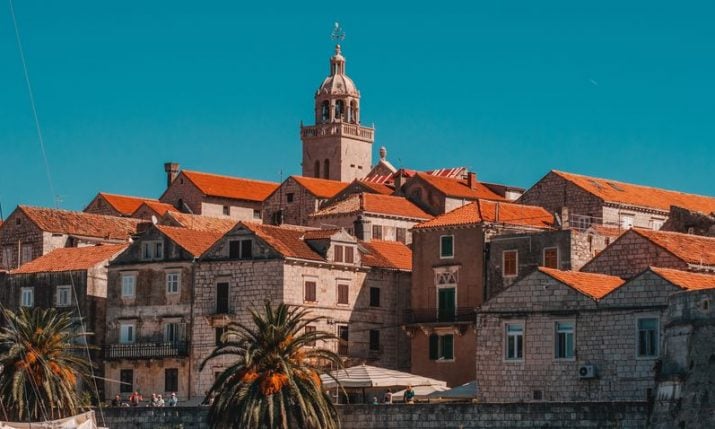Dalmatian lamb gets name protection in Europe becoming the 40th product from Croatia
- by croatiaweek
- in Food & Wine

Dalmatian lamb
“Dalmatinska janjetina” (Dalmatian lamb) has received the European protected mark of authenticity, the European Commission announced in the Official Journal of the European Union on March 8, 2023, Croatia’s Ministry of Agriculture said.
The product name “Dalmatinska janjetina” (Dalmatian lamb) is now entered in the register of protected marks of origin and protected marks of geographical origin and protected throughout the European Union. The EU mark of the protected mark of origin or the protected mark of geographical origin on the packaging guarantees the consumer the purchase of an authentic product.
The procedure for protecting the name “Dalmatinska janjetina” (Dalmatian lamb) was initiated by the Association of Sheep and Goat Breeders of Dalmatia, which submitted a request to the Ministry of Agriculture for the protection of the label of origin under the name “Dalmatinska janjetina”.
“Dalmatinska janjetina” (Dalmatian lamb) is the meat of lambs of the original Croatian sheep breed, the Dalmatian Pramenka, which are lambed, reared and slaughtered exclusively in Dalmatia.
For the production of “Dalmatinska janjetina” (Dalmatian lamb), lambs are slaughtered at the age of 70 to 130 days, when they reach a body weight of 15 to 28 kg. “Dalmatinska janjetina” (Dalmatian lamb) is named after the breeding area of the Dalmatian lamb, Dalmatia, but the name Dalmatia itself comes from the Illyrian word for sheep, dalma or delma.
The muscle tissue is pale pink to pink in colour, and the meat of the long back muscle contains less than 4% fat and a large number of different volatile aroma compounds, especially terpenes, and a specific composition of fatty acids, which all together result in specific sensory properties of the meat.
The especially valued “Dalmatinska janjetina” (Dalmatian lamb), which is produced on the islands, coast and karst areas of the Dalmatian Zagora, is characterised by a delicate muscle structure without pronounced marbling, white subcutaneous and internal fat deposits.
Compared to other types of lamb, the meat of “Dalmatian lamb” contains significantly less fat, and consumers recognize and especially appreciate “Dalmatian lamb” primarily because of its soft and juicy muscle tissue, as well as its aroma and taste without a pronounced mutton smell.
Croatia now has 40 agricultural and food products whose name is registered in the European Union as a protected designation of origin or a protected designation of geographical origin.
In addition to the now registered name “Dalmatinska janjetina”, the names of the products also registered are: Krčki pršut, Ekstra djevičansko maslinovo ulje Cres, Neretvanska mandarina, Ogulinsko kiselo zelje / Ogulinski kiseli kupus, Baranjski kulen, Lički krumpir, Istarski pršut / Istrski pršut, Drniški pršut, Dalmatinski pršut, Poljički soparnik / Poljički zeljanik / Poljički uljenjak, Zagorski puran, Krčko maslinovo ulje, Korčulansko maslinovo ulje, Paška janjetina, Šoltansko maslinovo ulje, Varaždinsko zelje, Slavonski kulen / Slavonski kulin, Međimursko meso ‘z tiblice, Slavonski med, Lička janjetina, Istra, Paška sol, Zagorski mlinci, Paški sir, Bjelovarski kvargl, Brački varenik, Varaždinski klipič, Malostonska kamenica, Rudarska greblica, Dalmatinska pečenica, Dalmatinska panceta, Lički škripavac, Bračko maslinovo ulje, Zagorski bagremov med, Zagorski štrukli / Zagorski štruklji, Meso istarskog goveda – boškarina / Meso istrskega goveda – boškarina, Samoborska češnjovka / Samoborska češnofka, Lumblija and Goranski medun.

